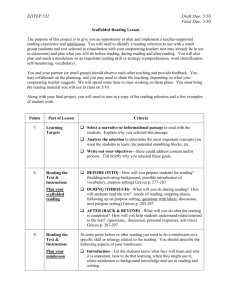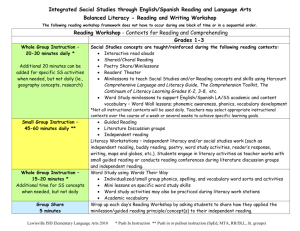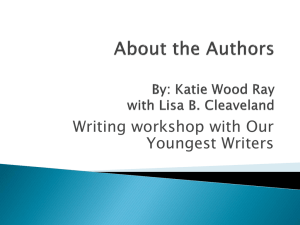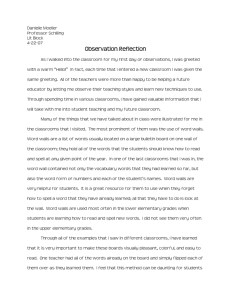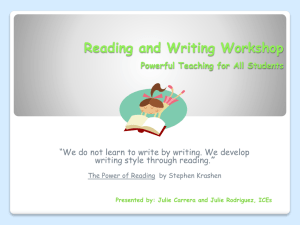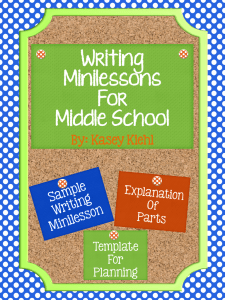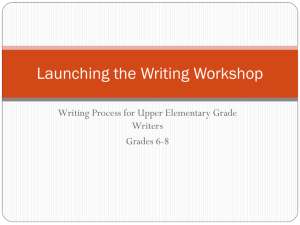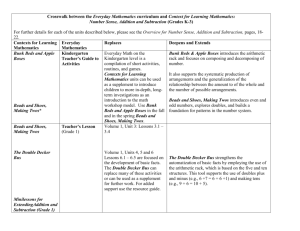Understanding Minilessons
advertisement
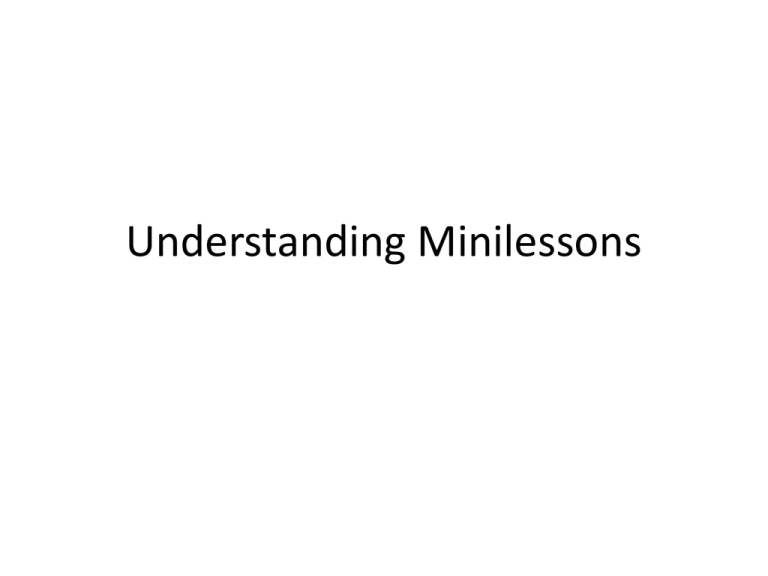
Understanding Minilessons Literacy Collaborative, 2010 Rationale • Minilessons are a teaching tool that can help teachers organize their thinking and teaching as well as support students as learners through scaffolding and focused lessons. Goals • To think about how the structure of minilessons can support learning in each of the workshops • To understand the constructive nature of minilessons • To consider links between the structure of minilessons and the idea of gradual release of responsibility Common Elements to all Workshops • Book talk, author talk, poet talk: Help to inform students and engage them in the process of reading and writing. • Minilesson and share: help to frame the workshop, allow for direct teaching, modeling, and reinforcement of the concept. • Independent work time: provides opportunities for students to apply new learning and extend current understandings while engaging in the process of reading, writing, or word study. The teacher confers with individuals during this time. • Small group instruction: guided reading or guided writing time within the workshops provides the setting for more focused work with students having similar needs. Elements of a Minilesson: • • • • • Minilesson statement Modeling the principle Have-a-Go Applying the principle Sharing and extending the learning Write a clear minilesson statement that: • Focuses on one element of: – Procedure – Convention – Craft – Literary analysis – Phonics or word study • Uses clear and simple language • Helps break down the reading or writing process into chunks that are accessible to students. Examples: • “Readers stop to picture what is happening while reading a story in order to think more about the characters, setting, or action.” • “Writers use strong verbs in order to paint pictures in the reader’s mind.” • “When a verb ends in silent ‘e,’ we drop the ‘e’ before adding the ending, ‘ing.’ • “Poets sometimes write their poems in the shape of the topic in order to make them more visually interesting and enjoyable.” Model: • Choose a section of text or a piece of writing that can serve as a model of the minilesson principle – A section of shared read aloud text – An example from the teacher’s or a student’s writer’s notebook or writing project. – An example from a student’s reader’s notebook – Words that illustrate the word study principle – A poem that Illustrates the minilesson principle. – A demonstration of an action Modeling, contd. • Model the procedure using manipulatives, if necessary. • Keep in mind various learning styles as you choose your models • Think about different levels of scaffolding that might be necessary for the students in your class, based on your assessments. • If there is confusion, reconsider the type of model and the approach you might use the next day. Have-a-Go: • Have another example ready for the students to work with, or • Ask the students to generate more examples • Reinforce the principle and clarify what students are to do during independent work time • Assess understanding before students leave the circle Apply the principle: • Think further about the principle and apply it during workshop time – – – – – – – In the writer’s notebook In a current writing draft In a reader’s notebook entry While reading independently During the word study application time While reading or writing poetry During small group work (guided reading or guided writing) Share and Extend Learning: • Share what students noticed or thought about while reading or writing • Talk more about the application of the principle • Elicit further examples of the principle from the students’ work • Debrief the process the students engaged in • Look for evidence of student understanding • Scaffold students who may still be unsure • Reiterate the principle and its application • Assess the effectiveness of the lesson • Think about future lessons Reflection: • Write a few thoughts about your comfort level with the concept of minilessons, and where you think your greatest challenge will lie when it comes to planning minilessons for your students.
